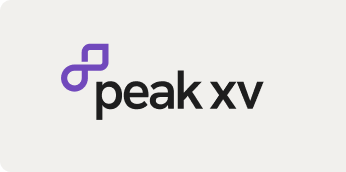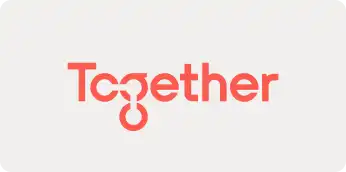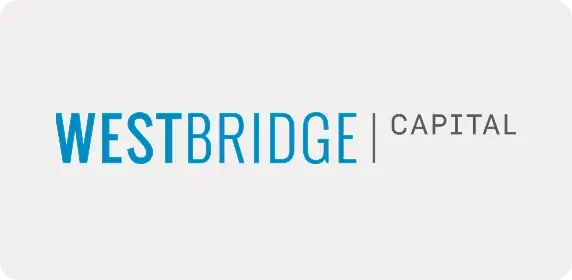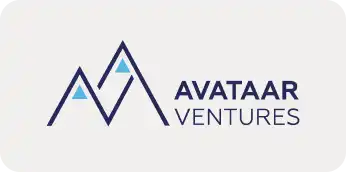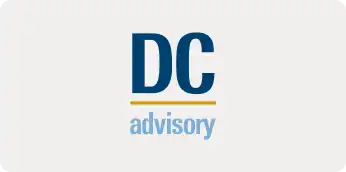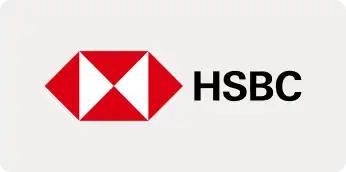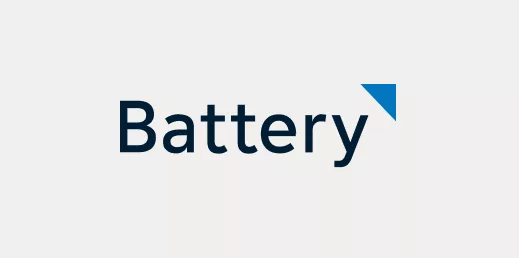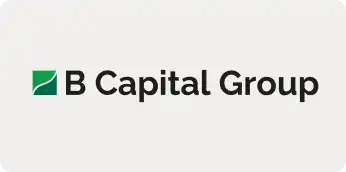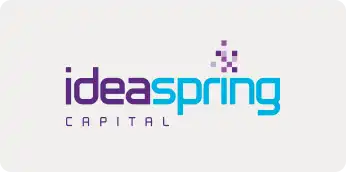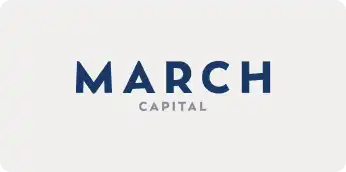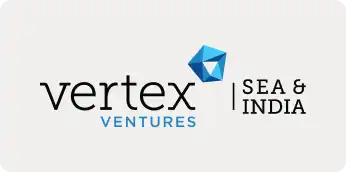Understanding the PLG Model: What is Product-Led Growth?
Product-led growth (PLG) is a massive shift in how software can be sold. Also, the buyers of software and the actual users may be different. Traditionally, buying software was the purview of CIOs and CTOs. While they have the larger picture, they may not always be the actual users. It is the business units that use the software.
Today the process is much more de-centralized and SBUs have greater influence in buying software (and hardware) – though software governance is (still) largely managed centrally. For instance, corporate users cannot simply bring their own devices (BYOD) and plug them into the system, unless the centrally governed mechanism allows. With Responsible AI pivotal to Board room discussions, the emphasis on governance is more so.
To illustrate how the landscape is evolving rapidly, let us look at the MarTech world. As per 2023 Marketing Technology Landscape Supergraphic, in 2011, there were about 150 searchable companies offering solutions in this space. Fast forward to 2023 – there were about 11038 companies – a whopping expansion with a CAGR of 53.7%. The keywords are “searchable companies” on a specific platform. What about very young companies that are yet to register? Another thousand can be easily added, I believe.
Due to the sheer volume of solutions available (read options for users), solution providers can’t reach out to their target audience as effectively as in the past, without turning the existing sales & marketing models on their heads.
Before going on to PLG, let’s spend some time, recalling the other common models, i.e. sales-led growth (SLG) and marketing-led growth. And mind you in many cases, they all exist in the same company – a hybrid approach is quite common. PLG is not a magic pill that will do wonders for your sales funnel, overnight.
Sales-led & Marketing-led Growth
As opposed to PLG, the traditional approach is SLG, where companies throw bodies (no doubt highly efficient and knowledgeable) to close a deal and retain customers. Large companies boasted an army of salespeople, and the smaller ones were also not left far behind, and they too added heft to their sales arsenal.
Proportionately smaller, the sales team often expanded with time. It worked well because there was personalization, and the approach was “hands-on”. Human connect traditionally drove personalization, leading to customer acquisition, expansion, and retention.
Marketing-led growth strategy, on the other hand, relies on marketing efforts to acquire new customers, retain them, and drive growth. The momentum is when the product goes viral, and to do that, marketers massively focus on building product awareness through content marketing, SEO, paid advertising or pay-per-click (PPC), webinars, personalized emails, targeted customer demos, etc. Value is communicated through a multi-channel strategy and metrics that measure the outcome, are obsessively monitored.
Let’s now look at PLG.
Both sides have shifted – customer demand and supply. As digitalization envelops every aspect of our lives, consumers are becoming savvier by the day, using technology and being self-reliant. Besides functionality, consumers are equally demanding and vociferous about intuitive design, at competitive price points.
We have already seen that shift in the B2C segment where a visit to a store to buy something is losing its erstwhile significance (social interactions with other buyers and store attendants drew footfalls earlier), and users now want to self-educate in using the software. An editorial from CMS Wire reveals, 53% would prefer to buy without any interaction with sales at all. The big question it asks – Today’s B2B Customers Don’t Want to Talk to You. Is that OK?
While it’s all very well to demand a personalized experience, for the solution provider there’s a challenge. In the age of instant gratification, prospective users move on to the next option easily. Sure, in the enterprise software market segment, it’s not so easy but creating customer stickiness is massively challenging for every segment and churn rates are obsessively monitored.
To illustrate this point, a Forbes article, though slightly dated (2022) says that it’s 5 times more expensive to acquire new customers than to nurture the existing ones and that’s only one of the reasons why Customer Retention is a big deal.
Outstanding Customer Experience isn’t a new idea at all. Once, it was sales that answered all customer queries (they still do in many cases) and took customers through their journey; with the advent of digital marketers (also a long time ago), the approach shifted – massively expanding product awareness to make it go viral through a multi-channel and multi-pronged strategy (product & customer experience blogs, targeted demos based on customer segmentation, SEO among others) became the focus.
The future lies in PLG. The future is here – to put it straight.
Customer acquisition, expansion, conversion, and retention are primarily driven by the product. Well, this may seem autocratic and that’s precisely what it’s not. Product-led growth is not product-manager-led growth.
Passing light through a prism gives us a rainbow-like effect where each color has a different wavelength and refracts at a different angle. In PLG it can be visualized in reverse. You have a product that acts like a prism and different teams are working to build (and enhance) that product – engineering, design, customer support, sales, and marketing.
They work at different wavelengths, and they come together to create an outstanding CX (on the other side of a prism). Think of it as democratization and while operating at “different wavelengths” the functions must come together to provide an outstanding and unified customer experience.
Product-led Growth in its purest form is a GTM strategy that relies on the customer using the product and eventually buying it, without human influence. Think of Dropbox, Slack, Figma, or Zoom.
Firstly, the idea behind these products is very powerful – addressing a very specific customer need which is intense. Secondly, they let us use their products for free up to a point. Thirdly, the design is intuitive and through several clicks, the user is good to go. We didn’t need salespeople to sit and educate us on how Zoom can be used. It is intuitive in design, and we soon realized that we needed more of the functionalities and adopted a pricing model that best suited our needs – the freemium model influences the user through value creation in every stage of the customer journey.
What are the Key Components of a PLG strategy?
While the product sells by itself to enable viral growth with lower acquisition costs and enhanced customer journeys, there isn’t a single playbook for PLG. And PLG companies don’t have to be like the Zooms and Slacks of the world following a freemium pricing model.
Every product company is different so the pricing model has to be flexible to accommodate diverse levels of complexity where there are Full PLG models and Semi-PLG. In the latter instances, Inside Sales of the product company plays a vital role in the early stages, particularly during interfacing and integrating with other existing platforms.

The first question to ask is, can the product sell by itself?
PLG is disruptive – remember the prism example cited earlier. Rarely will you find a full PLG-born company. In most cases, a sales-led and marketing-led GTM strategy already exists. If they already exist, then how do you avoid a possible collision course, especially when sales and marketing efforts are not predictable in giving you the desired outcome?
Having a deep understanding of how the product works is key – and not a perception of how it behaves in the market. If the product has been able to sell on its own then what value has been added by sales and marketing, and how do you align the value creation in this new approach?
Can it create an “Aha Moment” for the customer and get into the engagement loop – great user engagement that creates stickiness? Or does it still need input from the Sales & Marketing teams to reach that point? If yes, then your product is not yet ready for full PLG. If a human touchpoint is required to activate usage, then maximum monetization may not be achieved, yet.
Stripe, a payment processing company, is a good example. A few years back, Stripe customers would have required help from the team to set it up in enterprises. Today, with No-code building solutions, it’s much easier, where the growth model can evolve into PLG.
The second question is – how are you communicating the product’s value?
In PLG, ideally, customers should experience value without input from Marketing and Sales. Let’s look at cybersecurity software that works in the background. If you aren’t getting attacked it implies the product is working well. Users needn’t act on something to unlock greater value.
It’s a passive product protecting systems working in the background. In a way, the engagement loop is passive too, and without it, customers aren’t being communicated frequently enough about the product’s value. In such a scenario, driving activation, monetization, and retention becomes tricky.
SaaS companies selling cybersecurity products through PLG may need to think through value articulation and identify other channels as well, to bolster the messaging. At a basic level, an engagement loop consists of motivation, action, and feedback. Asana, a company that provides productivity tools and workflow solutions, uses gamification to keep users engaged.
In B2C companies, engagement loops can be built through new exciting features that draw customers but in B2B it isn’t easy, especially in use cases where the product sits passively and does the work.
Customers have a very developed mindset about how software products should, not only engage but also entertain – the kind we take for granted in B2C. This is a common challenge that the PLG faces as a GTM strategy. And that’s why we will go back to the first question which is – can the product sell by itself?

Here’s putting it all together that will assist in PLG strategy formulation:
- The rather obvious ask and it’s no different in PLG – conduct intensive market research to understand who your customer is; align the product with customer needs, in other words, understand what it can do, and also what it can’t.
- Customer onboarding and activation experience should be seamless.
- Retention, habit formation – call it the engagement loop.
- Enabling self-service that encourages users to discover, adopt, and start using the product independently, reducing the dependence on sales and customer support.
- Intuitive interfacing and design through data-led insights – collecting and analyzing data on product usage that will improve product design and overall performance.
- Finally, and most importantly – obsessively monitoring key metrics such as customer lifetime value, engagement loop, and customer retention rate.
Importance of PLG in the Modern SaaS Landscape
In a Sales-led GTM strategy in SaaS, brilliant salespeople wax lyrical about the product features, “great deals”, demonstrate value through tailored demos, deliver as per contract, and onboard.
- This is a “push” strategy.
- Customer acquisition is costly.
- Sales cycles are longer – because sales are dependent on human interactions.
- Naturally, scalability is a challenge.
Whereas, in a PLG growth model in SaaS:
- It is a “pull” strategy.
- Users self-educate. Customers learn to use the product from the product.
- Customer acquisition is less costly. A simple sign-up and onboarding process reduces the time-to-value.
- Shorter sales cycles (naturally). With a shorter time-to-value, upgrading into a paying customer is much faster.
- So, higher chance of scalability. On the other hand, in SLG, salespeople will have to be hired regionally, and also customize the onboarding process (languages, currencies, etc.).
- Higher Revenue Per Employee (RPE) because the product does the heavy lifting and human intervention is optimized – doing more with less and employees can have the roles cut out to align with the company’s growth strategy.
- A better UX (User Experience) can be envisaged. Product design should be intuitive to create customer stickiness – going back to the engagement loop. A poor design can massively impact adoption (negatively).
Caveat
Products that require extensive customization and integration with existing systems, or have complex features, may not be best-suited for full PLG but a semi-PLG. A self-service portal may not provide the desired customer experience, and a supporting sales/marketing-led approach may be necessary to unlock value.
Steps to Implement a Successful AI-driven PLG Strategy in Your SaaS Business
AI and data-led insights play a critical role in driving PLG as a GTM strategy for SaaS companies. By leveraging data, solution providers can enhance UX, and optimize product features to drive customer acquisition and retention. Here’s how:
- Understanding user behavior. Through Data Analytics, solution providers can track how users interact with the product – the features most used and the ones least used (a possible target for improvement)
- Optimizing the onboarding process. Effective onboarding is key to PLG. By analyzing Activation Rates & User Engagement Metrics, bottlenecks can be identified and streamlined subsequently.
- Driving product improvements. Through continuous Feedback Loops (user feedback and usage patterns), companies can make informed decisions about product enhancements.
- Enhancing market strategies – targeted and well-crafted marketing strategies resonate with the ideal customer profile. Marketing data analysis aids in effective messaging through appropriate channels.
The data sources are (non-exhaustive):
- Marketing research data.
- Product usage data.
- Customer Feedback
- Marketing data.
Key Metrics to Measure PLG Success
- Conversion rate from page views to sign-ups – (Sign-ups for free trial or freemium/Total Page Views). It indicates how effectively the website communicates value to potential users.
- Active users – It indicates customer stickiness. The number of users who engage with the product regularly.
- Completed Onboarding to Active User Ratio – This reflects the effectiveness of frictionless onboarding.
- Time to Value (TTV) – the time taken by a user after signing up to realize the full value of the product. A shorter TTV indicates a high possibility of converting the free customers to the paying ones.
- Product-Qualified Leads – users who have experienced the full value of the product and are likely to convert into paying ones.
- Churn rate – It tracks how often users engage with specific product features. This helps to identify under-utilized product features and prioritize accordingly.
- Feature usage – how often users engage with specific features. It helps to identify under-utilized product features that can be enhanced.
- Net Promoter Score (NPS) – measures customer satisfaction (C-SAT), loyalty and users’ likelihood to recommend the product. High NPS scores can be co-related to user advocacy, leading to organic growth.
- Expansion revenue – revenue generated from existing customers through upsells and cross-sells.
- Customer Lifetime Value (CLV) – the total revenue expected from a customer over their entire relationship with the company. Understanding CLV helps in assessing the long-term value of new customer acquisitions. This insight is crucial for sales & marketing funnels.
Real-World Examples of AI-driven Product-Led Growth in Action
Spotify – minimalist onboarding process and AI-driven personalization
- Spotify analyzes user listening habits to create personalized playlists and recommendations. It provides a seamless, music-discovery experience through AI.
- Their onboarding process is fairly simple. There are no in-app tutorials or welcome modes. User Navigation is intuitive.
Duolingo – a language learning app that uses AI to curate personalized learning pathways
- The app analyzes user performance and adapts the difficulty and content of the lessons.
- Uses chatbots for interactive practice conversations, enhancing the learning experience.
Intercom – customer messaging platform proactively engages with users
- AI-powered chatbots can initiate conversations answer questions and route users to appropriate resources.
- Leverages AI to analyze user behavior for segmenting users (targeted messaging).
Toplyne – PLG platform that uses AI to identify high-intent users
- The platform analyzes user behavior data to create segments of users that are likely to convert.
- These segments are sent to sales and marketing teams for targeted outreach. An AI-driven approach leads to faster conversion.
Conclusion – answering some FAQs
- How does PLG improve user retention?
The product should be intuitive in design with a frictionless Ux. Moreover, the engagement loop should be continuously worked on to create customer stickiness, communicate value, and also indicate at what point, users will adopt the freemium model. Pricing is a crucial aspect – how much to offer for free and exactly when to start premium pricing? Since human intervention is optimized (or no human intervention at all), customer retention is faster.
- What are some challenges in implementing PLG?
The real challenge lies in the product design and features – can it sell itself? Design and product features should be intuitive. And, product-led growth is not product-manager-led growth. Far from being autocratic, it is a democratized model where all teams – sales, marketing, design, product engineering, etc. – should work together to give a uniform Customer Experience. Products that require a high degree of personalization and integration with existing platforms, would require significant human intervention and may not be best suited for PLG.
- How does PLG impact sales and marketing teams?
- Shift in Customer Acquisition Strategy – a self-service model reduces the need for extensive sales pitches and demos. Marketing teams, showcase the product’s value through User Experience.
- Enhanced collaboration between sales, marketing, and product development – to provide a unified customer experience.
- Data-led decision-making with an increased focus on metrics.
- Emphasis on Customer Retention. Marketing & Sales efforts will increasingly shift focus to C-SAT and post-customer-acquisition engagement.
- Lower cost of acquisition because human dependency is minimized leading to faster Time Taken to Value.
- Much higher focus on personalization based on usage data.
- Can small SaaS companies benefit from PLG?
Yes, they can, provided they keep in mind that the product should be good enough to sell itself through a self-service mode. For that, product engineering costs and R&D outlay may be substantial, including investments in data technologies and AI.
- What are some tools to support a PLG strategy?
PLG tools are specialized software solutions that bolster and amplify the PLG strategy. The PLG tools should include these features:
- User Analytics – to understand how users are interacting with the product.
- User Onboarding – tools that customize onboarding workflows.
- In-App Messaging – direct communication with users can massively improve Ux and guide them through the customer journey.
- Integrations – PLG tools should integrate with the existing tech stack.
Examples: Dashly, Intercom, Mixpanel, Pendo, Drift, ProductBoard, SleekNote, Gainsight.
- How do you measure the success of a PLG strategy?
Measuring key metrics like conversion rate from page views to sign-ups, active users, completed onboarding to active user ratio, time taken by a user after signing up to convert to a paying user, PQL, churn rate, NPS, & CLV. We’ve answered this in detail in the section above.
- How can PLG influence the go-to-market strategy for a new product?
The PLG strategy components are similar for new products:
- Product as the primary marketing tool
- Focus on User Experience
- Lower Customer Acquisition Cost
- Data-led insights influence decision-making – product development and marketing
- Enhanced customer retention
- Alignment across teams.













